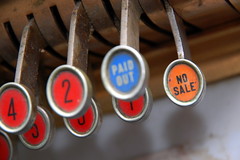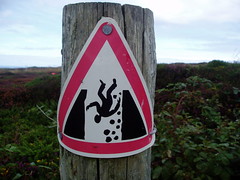 Ever wish you didn’t have to bother with a landing page? They’re sooo much work. Writing them. Designing them. Tweaking them. What a pain. And if you make a sale, well you might actually have to do something. Ugh.
Ever wish you didn’t have to bother with a landing page? They’re sooo much work. Writing them. Designing them. Tweaking them. What a pain. And if you make a sale, well you might actually have to do something. Ugh.
Don’t worry. Here are 10 tips on how to get a bad landing page that will hardly ever sell anything!
1. Don’t use one
Why bother anyway? Just send everyone right to your home page. They’ll eventually find what they want, or maybe they’ll just leave your site completely and not bother you.
2. Write a boring headline
Use something like “20 Years in Business” or “We Stock Computers.” If you don’t stand out, or give any sort of benefit, your headline, and the rest of the page, will be ignored. It’s hard to write headlines your readers can’t resist.
3. Talk mostly about yourself
Your visitors came to your site right? They must want to know all about you then. Tell them about your new puppy, or that great new cereal you had for breakfast. And, of course, don’t forget to include the details of your recent colonoscopy. Never run the one-minute marketing test.
4. Never discuss what the reader gets
They’re here to find out about you (see point #3). Why bother talking about what your visitors will get from your product? Just tell them how proud you are about making it and how long it took.
5. Outsource design to an 8-year-old
A trained designer is too expensive. Hey, your nephew is into the Web, why not let him take a crack at it? Tell him to use really small, light-colored type. The closer they have to look, the more attention they’ll pay to your words.
6. Write the copy yourself
You learned how to write in second grade. Anybody can put words on a screen. Writing doesn’t matter, why not save some money and do it yourself. And, who knows your products (and how great they are) better than you?
7. Sell to everyone
Picking a niche market is for sissies. Everyone will want your product! Who wouldn’t want tap shoes for cats? Don’t try to pick just one niche, that’s way too limiting.
8. Gobbledygook for the win
The more jargon and insider words you use, the smarter you look. Pepper your copy with lots of buzzwords and phrases like “forward-looking companies invest in three-dimensional management resources.”
9. Don’t use testimonials
Real opinions from real people never swayed anyone. And never include pictures either. They’re not terribly believable. Neither are full names. If you must use testimonials, just the initials are fine.
10. Write big blocks of text
Put it in big, long paragraphs. Run them all together on the page, and use lots of complex sentences. Go crazy with commas, semi-colons, and colons. Show off all those fancy words you learned in school. Never say “confuse” when you could “obfuscate.”
What? You’re not buying any of this? Good! Check out these pages to learn how to write landing pages that do sell:
The Simple Five Step Formula for Effective Landing Pages
How to Write a Landing Page
What do Landing Pages Have in Common with Grade School?
P.S. Thanks to Lorraine Thompson for the inspiration.




